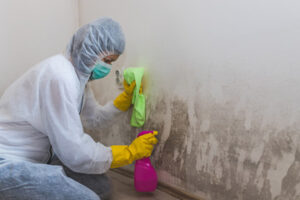Mold removal is a process of physically removing and cleaning mold from an area of your home. This process can be done using a vacuum cleaner and an antimicrobial solution. However, be careful not to use bleach or ammonia as they can be poisonous. Controlling the dampness of your home is critical in preventing mold from forming. Damp attics and basements with poor drainage are the most common places for mold infestations. Your best defense is to stop leaks, route water away from the foundation, and provide good ventilation.
Mold removal is a process that involves physically cleaning and removing areas of mold. This procedure is important because mold spores and chemicals can cause health issues if they are exposed to them. The process of mold removal also involves cleaning up the area after the mold has been removed.
Mold can cause structural damage to buildings. It can eat into wooden structures and weaken floors and walls. Therefore, if you suspect mold damage in your building, you should contact a structural engineer for a thorough inspection. In many cases, mold growth is caused by roof leaks and can cause severe damage to a building.
The first step in the mold removal process is to assess the level of moisture in the affected area. If mold is visible, the mold removal process may include scrubbing the area with a cleaning solution. Professional mold removal services may also use HEPA filters and other specialized gear to keep the air clean and minimize exposure to mold spores. After mold removal, a professional mold remediation company will clean and seal the area.
The best way to remove mold is to prevent it from returning to the area. Using a HEPA-filtered vacuum and antimicrobial cleaners will keep the mold spores in check and will prevent them from spreading. The next step is to clean and disinfect the area, removing any dead mold fragments that might have remained.
Using special equipment and chemicals, mold remediation can be a complicated and expensive process. Proper training is essential because the materials and equipment necessary for mold remediation are not available at your local home improvement store. And the process is often labor intensive. Professional remediation technicians will be able to identify structural damage as well.
Mold is a dangerous substance that can cause serious health problems if not dealt with immediately. It contains allergens and irritants that can cause skin rashes, irritated eyes, and other respiratory problems. It may also lead to lung problems and hay fever.
Biocides can be used for mold remediation to kill mold spores. However, biocides are toxic to both humans and mold, so they should be used carefully and with proper PPE. Also, it is important to follow label precautions and use the right fungicide.
When hiring a remediation company, it is essential to make sure the company has experienced staff to carry out the job safely. They should have certifications, licenses, and insurance. A licensed company should also have a strong history of service and be able to provide you with a blueprint for their work.
Mold removal may involve air sampling and testing. It will help to determine where mold growth is and how serious it is. Testing the air may also help to determine the best method of cleanup.
Antimicrobials are a type of cleaning solution used to kill mold and other microbial organisms. They can be applied to surfaces, including tubs and toilets. They can also be used on non-porous materials such as glass and metal. The best way to kill mold is to follow the instructions provided by the product’s manufacturer. After treating surfaces with an antimicrobial solution, be sure to clean the surrounding areas as well.
Hydrogen peroxide is another effective antifungal and antimicrobial solution. You can apply hydrogen peroxide to the affected area with a spray bottle. The solution should sit on the mold growth for 10 minutes; then, you can wipe away the residue with a dry cloth.
Another antimicrobial solution is vinegar. It’s an inexpensive and effective way to kill mold. Vinegar is better than bleach when it comes to killing mold, but it’s not as powerful as ammonia. Although both vinegar and bleach are highly effective against mold, they contain toxic fumes and should be used only if you’re confident in your ability to clean the affected areas.
It’s important to wear protective gear whenever you work with mold and fungi. This way, you’ll minimize the risk of cross-contamination. In fact, over 80% of pathogens in a building are transmitted through contact with human hands. Therefore, mold is a serious concern for people who are already ill or have weak immune systems.
